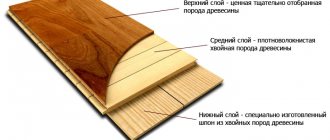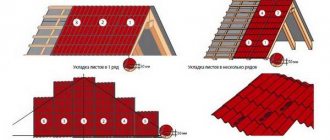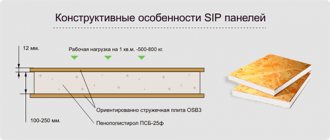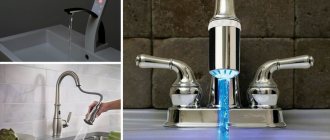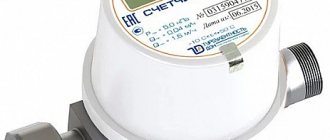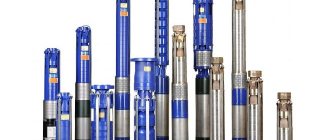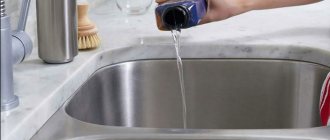Soft tiles are a bitumen-based material; they are square or rectangular modules of small sizes, figuredly cut along one edge, and laid on the surface with a purely overlap. This material is optimally suited as a covering on pitched roofs of any configuration and shape (dome, single- and double-pitched).
The history of the creation and development of flexible tiles begins at the beginning of the last century. It was created in the States, where it is currently the most popular type of roofing in residential construction. There are a couple of reasons for this phenomenon: availability of material, ease of installation, attractive appearance and good practice of use.
Having appeared relatively recently in Russia, flexible tiles are quickly gaining popularity among home-conscious owners, architects and professional builders. If you would like to become more familiar with the characteristics of the material and the intricacies of its choice, we recommend that you read the article on the topic: “Rating of the TOP 7 best manufacturers of soft tiles.” Features of the material, characteristics, reviews - let's talk about everything in more detail.
Features of the material
Let's take a closer look at the composition of flexible tiles.
The top layer is a stone topping. Basalt, anthracite and slate are used for these purposes.
The next layer was the base - the bitumen itself. Bitumen is a fairly strong substance, environmentally friendly, strong and resistant to any impact. After treatment with a special polymer composition based on styrene-butadiene compounds, bitumen becomes flexible and pliable, perfectly compresses and stretches under the influence of atmospheric seasonal temperatures.
Another subtype of bitumen compound as a roofing material is oxidized bitumen. By saturating it with air, the mixture is artificially aged, thereby increasing its service life. But due to the nature of the connections between molecules, after enrichment with oxygen, such a roof should be used in regions where the air temperature does not fall below minus five degrees. It is important to determine the density of the shingles - according to GOST 32806-2014, the content of bitumen compounds should not be lower than 750 g/m².
In Western countries, the simplest and cheapest bitumen flooring configuration is kept at 800 g/m², in more expensive models – 1300 g/m². Manufacturers are based on the European standard EN 544:211 when creating. When analyzing Western standards and ours, we can conclude that GOST is essentially an adaptation of a European document with minor changes, and therefore has a degree of compliance - MOD (modified).
In laminated tiles (two- or three-layer) the amount of bitumen is significantly higher than in single-layer analogues.
The conclusion is simple. When choosing flexible tiles, you should pay special attention to the quality and quantity of bitumen. A roof based on SBS-modified raw materials will last much longer than its counterpart based on oxidized bitumen. The price of such tiles is higher, as is its service life. For the rest, the choice is yours.
The basis of the soft roof is fiberglass, which ensures the reliability of the tiles from mechanical damage, changes in size and protection from longitudinal stretching.
Advantages and disadvantages
- small amount of waste during installation;
- works as sound insulation (muffles the sounds of rain, hail);
- minimal load on the rafters and other related roof structures;
- the coating is hydrophobic due to special impregnation and compliance with installation standards;
- looks great in any exterior design;
- There is a variety of shades, shapes and configurations available.
- strict installation requirements - temperature conditions not lower than +5 C;
- the price is higher than other types of roofing.
Production technology
Main stages:
- Application of molten bitumen to fiberglass in a saturator.
- Drying the treated canvas, covering it with a second layer of bitumen.
- Applying granulate of the same color to a hot layer.
- Covering the back side with a protective film to prevent sticking.
- Cooling in the cooling chamber.
- Coating on the inside with bitumen adhesive.
- Cutting fabric into shapes and sizes.
- Packaging for storage in a warehouse.
Kinds
All subtypes of soft tile roofing can be classified according to a whole list of criteria. The first of these can be distinguished by the number of layers: there is a single-layer, two-layer and finally three-layer coating. Multilayer tiles are also called “laminated”, because such a structure is more resistant to wind and moisture, although it weighs a little more.
The main advantage of multi-layer shingles is their thickness - they are stronger than single shingles. Reinforced size is more difficult to damage or break during installation and operation. The multilayer structure can withstand even powerful winds with gusts of up to one hundred and fifty kilometers per hour.
According to the form of execution, the sizes are as follows: hexagonal, rectangular, jagged, brick, “beaver tail”. In addition, manufacturers often cut layers of bitumen flooring at their discretion - trapezoidal, semicircular and other shaped sizes.
But the greatest variability in the design of roofing decks was introduced by mineral chips. It allows you to slightly change the structure and shade. Thanks to her, there are shingles with a silver, golden tint; aged Copper sizes.
Required tools:
Before starting work, you need to ensure that you acquire the necessary tools. You may need:
Roofing knife - for cutting single-layer tiles.
A special mechanical or pneumatic cutter for cutting multi-layer bitumen shingles.
Metal scissors - for cutting metal strips or reinforcing profiles.
Stapler - for fixing roofing films.
Guide bar - for even cutting of shingles in valleys, on ridges or junctions.
Hammer, saw, drill, screwdriver - for installing the rafter system and fastening various elements.
Construction hair dryer - for heating bitumen shingles or components (valleys, ridges) in the cold season.
Rating of the TOP 7 best manufacturers of soft tiles
Our top includes:
- Onduvilla;
- Dock Europa;
- TECHNONICOL SHINGLAS Classic;
- Ruflex Runa;
- Icopal Plano Natur;
- CertainTeed Belmont;
- Siplast Toisite.
Let's take a closer look at them.
Onduvilla
One of the simplest, most durable and beautiful modern roofing materials is Onduvilla flexible tiles. It consists of cellulose tiles impregnated with a bitumen-mineral mixture.
This roofing sheet does not lose its specified properties throughout its entire service life in any climatic zone.
The low weight of the material significantly reduces the load on the roof structure and simplifies installation. Each Size is equipped with transverse waves, which are points of connection and fixation of neighboring Sizes, and also prevent the penetration of water and ice under the canvas.
| Color | red, brown, green, fiorentino |
| Layers | 1 |
| Density | 4 kg/m² |
| Size | 1060x400x3 mm |
Price: from 136 to 151 rubles m².
Onduvilla roof tiles
- wavy sheets distribute the load (snow, hail) better than others;
- water-repellent impregnation.
- Unbreakable.
Easy to install roofing from a foreign manufacturer. Lightweight, durable, not afraid of the sun. The extension was sheathed, everything was great, no complaints. Cheap and cheerful. I am satisfied, and I recommend you to buy this type of roofing.
Dock Europa
Designed for covering roofs of varying degrees of complexity in cottage and low-rise construction, both during reconstruction and on newly constructed buildings and structures for various purposes as the main roofing covering. Used on roofs of any configuration and complexity. The required slope of the roof slope is from 12 to 90 degrees.
| Color | brown, gray, green, red |
| Layers | 1 |
| Density | 3.2 kg/m² |
| Size | 1000x318x2.8 mm |
Cost: from 189 to 210 rubles m².
roof tiles Docke Europa
- anti-slip coating;
- The base of the sheet is double PVC film.
- porous structure, retains more water than other positions presented in the TOP.
Decent coating for roofing and other finishing works. I bought a lot at once and sheathed the roof of the country house. It turned out nice, I'm pleased. I managed it without the help of hired workers, which is what prompted me to make the purchase. I recommend!
TECHNONICOL SHINGLAS Classic
Shinglas bitumen roofing is produced at two factories owned by Russia - in Lithuania and in the Ryazan joint Russian-Spanish enterprise, together with the Spanish concern ChovA.
The factories have installed modern imported equipment, which uses the latest advanced technology to produce soft roofing that meets all international quality standards. Environmentally friendly raw materials used in the production process, as well as quality control at every stage.
| Color | almond, nero, olive, sandalwood, granite, stone |
| Density | 2.9 kg/m² |
| Size | 980x310x3 mm |
It will cost from 235 to 259 rubles m².
TECHNONICOL SHINGLAS Classic tiles
- variety of shades;
- Can also be mounted horizontally.
- made on the basis of oxidized bitumen - suitable only for warm regions.
Wonderful coating from a domestic manufacturer! We installed them on the cottage with my father and did it ourselves, fortunately there are installation manuals on the Internet. It is very easy to lift the panels to the height, since they are made in one layer and do not weigh very much. In a word – high quality, I recommend it!
Ruflex Runa
Exclusive tiles are ideal for covering roofs of any shape and meet all European environmental standards, which guarantees their absolute harmlessness to humans and the environment. Soft roofing Ruflex will provide the roof of the house with resistance to large temperature changes. A variety of shapes and shades of products provide the opportunity to make a building in almost any architectural style.
| Color | granite, taiga, baltic, ripe chestnut, terracotta, copper tint, golden sand, dune, blue lagoon |
| Density | 4.3 kg/m² |
| Size | 1020x300x3.2 mm |
| Layers | 1 |
Price: from 371 to 400 rubles m².
tiles Ruflex Runa
- wide range of colors;
- three variants of shapes - wave, scale and brick.
- low content of bitumen and binding polymers, which is why the sheets break easily.
I would like to recommend roofing material from Ruflex. Perfect for installation on prepared surfaces, resistant to atmospheric influences, easy to wash with a hose, and easy to install. I am satisfied and recommend it to you!
Icopal Plano Natur
Thanks to its technical characteristics, Icopal soft tiles are perfect for creating roofing coverings on roofs of the most complex geometric shapes. Icopal is an excellent combination of price and quality. It will not allow external factors to affect the degree of comfort in the room. Official warranty from the manufacturer.
Icopal produces bituminous shingles in factories located in France and Finland. All products are manufactured using SBS modified bitumen. The appearance of Icopal roofing coatings on the market allowed many designers to look at the possibilities of roof finishing from a different angle and place accents in the right places.
| Color | graphite black, charcoal grey, brown, green, brick red |
| Density | 8.9 kg/m² |
| Layers | 2 |
| Size | 1000x320x5 mm |
Price: from 492 to 520 rubles m².
tiles Icopal Plano Natur
- two-layer;
- water-repellent and antifungal impregnation.
- no cons found.
I took a purely Finnish brand because I had heard about their quality. You were right – the material is dense, waterproof, and not heavy. The sheathing has been installed on the house for two years now, it hasn’t peeled off, and it feels great. I have never regretted it and I highly recommend Icopal!
CertainTeed Belmont
CertainTeed (USA) is presented in a wide range: more than 20 lines and 150 colors, from economical to luxury. The product has a lifetime guarantee and is a standard of high quality. The product is produced in the form of two- and three-layer laminated tiles. Thanks to the use of patented technology, the layers are sintered after installation.
| Color | black granite, stone gray, wet wood, aged marble |
| Density | 12.47 kg/m² |
| Layers | 3 |
| Size | 914x457x12 mm |
It will cost from 801 to 870 rubles m².
CertainTeed Belmont shingles
- three layers of bitumen;
- not afraid of water.
- 12 mm thick - difficult to attach.
Excellent quality bitumen slabs! They are attached with special self-tapping screws to a wooden sheathing. Installation is not difficult, just pick it up and install it! My son-in-law and I are working on decorating the dacha and at the same time insulating it. I am very pleased with the quality of the purchased product and strongly recommend it to you!
Siplast Toisite
Siplast bitumen shingles are an exclusive, particularly strong and durable material that gives an impressive look to the roof and the entire building as a whole. Siplast roofing is a Premium class material and is used on pitched roofs with a slope of 16° (from 22° for an oval shape), including roofs with complex structures.
| Layers | 2 |
| Color | copper, flame brown, granite gray, slate gray |
| Density | 17.5 kg/m² |
| Size | 500x300x6 mm |
Cost: from 1,230 to 1,400 rubles m².
tiles Siplast Toisite
- the optimal sheet size is 500x300x6 mm;
- dense PVC base;
- antifungal impregnation.
- no deficiencies were found.
I would like to recommend you a soft roof from Siplast. They installed it on a barn, since all kinds of flammable materials are stored there; to prevent the spread of fire in the event of small fires (and we live in the south, grass often burns in the fields, burning them out entirely and can threaten our village). Everything is great, we are happy.
How to install it yourself
Preparatory work
1. At home, a standard set of materials and tools is selected.
2. Using plywood, OSB boards or wide boards, the base is strengthened.
3. Rafters are treated with antiseptic and fire-resistant agents.
4. A ventilation system is being installed.
For a slope greater than 25 degrees, the ventilation outlet area is 8 square meters. cm, with a smaller slope - 16 square meters. cm.
5. A bitumen cushioning layer is laid around the perimeter of the roof.
With a slope of less than 18 degrees, the gasket can only be placed in certain areas:
- in the pipe area;
- at the junction with the wall;
- on a skate;
- on eaves overhangs.
6. Cornice and pediment strips are installed.
7. The chimney outlet is marked.
8. The valley lining carpet is laid in the color of the roof.
Step-by-step instructions on how to lay it yourself
- Eaves shingles are laid on strips fixed to the eaves and nailed with galvanized nails. To save money, instead of cornice tiles, you can take ordinary tiles and cut off the petals. Then the installation is done end-to-end two centimeters from the overhang.
- Ordinary shingles are laid on both sides of the middle of the roof overhang and nailed with four nails. With a large slope, the number of nails driven can be increased to six.
- The first row should retreat from the eaves overhang by one to one and a half cm, and the petals should cover the joints of the eaves sheets.
- The second row is placed in a similar way, overlapping the cutouts of the previous row with petals.
- The edges are cut and glued, leaving a layer of up to 10 cm.
- The final rows are laid in exactly the same way - the shingles are cut to form a strip of 15 centimeters and coated with seven to eight centimeters of glue.
- Before working on the skate, the scaffolding is first prepared.
- The sheets are laid with an overlap of five centimeters and nailed with four nails. Ridge shingles are obtained by cutting the eaves along the perforations, then bending them and laying the short part along the ridge.
- Passages through the roof are made using rubber seals or special technologies: a triangular strip is installed at the junction of the roof and pipe; - lay the gasket with overlaps coated with glue; — the surface of the pipe is insulated with the calculation of covering 35 cm of the pipe and 25 cm of the slope; — a bar is installed around the perimeter; — the iron apron is fixed: — the seams are sealed with silicone sealant.
- The connection to a vertical wall is done in the same way. Only the rail is fixed along the wall, and not along the perimeter.
A properly installed roof will serve for many years, protecting the building from cold and moisture. In the absence of sufficient experience in laying soft tiles, it is better to entrust the arrangement of such an important element for a house, garage or gazebo to trained specialists. At the same time, knowledge of the instructions will allow you to control the entire process.
Installation video tutorial:
Comparison table of characteristics
Below are brief parameters of the considered models, namely:
| Model | Layers, pcs. | Density, kg/m² | Size, mm |
| Onduvilla | 1 | 4 | 1060x400x3 |
| Dock Europa | 1 | 3.2 | 1000x318x2.8 |
| TechnoNIKOL Shinglas Classic | 1 | 2.9 | 980x310x3 |
| Rulfex Runa | 1 | 4.3 | 1020x300x3.2 |
| Icopal Plano Natur | 2 | 8.9 | 1000x320x3 |
| Cartain Teed Belmont | 3 | 12.47 | 914x457x12 |
| Siplast Toisite | 2 | 17.5 | 500x300x6 |
Installation features
First of all, prepare the base - a wooden sheathing. It is usually made from chipboard or edged pine boards, less often from thick plywood. Then, you should take care of air circulation between the layers - you need to equip a ventilation system. The composition and quality of soft tiles are completely pore-free. This eliminates any penetration of moisture from rain or air under the roof, which, naturally, is a big plus.
But on the other hand (in the literal sense of the word - on the reverse side of the roofing cake) this will contribute to the formation of condensation under the roof of a soft roof. This is precisely why ventilation is installed under the roof, to ensure a free supply of fresh air naturally, to avoid the formation of mold and mildew from excess moisture. One way or another, air circulation is ensured by preparing special products.
Video
The presented video reveals the intricacies of installation in more detail.
Where can I buy
Different types of goods can be purchased in construction supermarkets or in markets where a large range of products is presented. In addition, budget new items can be easily ordered online using the Yandex.Market aggregator, which demonstrates products with descriptions, photos and a direct link to the manufacturer’s online store. Tips and recommendations on what to look for, what the best models are and how to choose the right shingles will be helpful.
What to look for when choosing
- Color and shape. The appearance of a roof made of soft tiles is determined by the color, shape of the shingles, the number of layers and granules. Thanks to such a variety of shapes, a visual imitation of classic ceramic tiles, shingles, slates is easily created and allows you to create individual original design solutions.
- Granulate. A dense layer of mineral basalt chips reliably protects the bitumen layer from exposure to ultraviolet radiation. The coating should completely cover the surface of the shingles; the presence of open areas of bitumen may indicate poor quality of the material.
- Date of manufacture. The back side of the tiles is covered with a self-adhesive mass. During long-term storage, the glue dries out, so it is important to pay attention to the date of manufacture. Shingles produced less than 6 months ago have good adhesion (sticking). If the tiles were produced more than a year ago, then during installation you need to use a hair dryer.
- Reinforcing base. The basis of bituminous shingles is fiberglass. This material provides better fire resistance than an organic base (for example, roofing paper used in the production of corrugated bitumen sheets and roofing felt). In addition, the inorganic base ensures a long service life of the material - more than 30 years.
Varieties
1. According to the pattern and shape of the shingles:
- hexagon;
- rhombus;
- shingles;
- slate;
- three-layer cutting;
- irregular;
- dragon tooth;
- wave;
- beaver tail.
2. For component modifications:
- row – for forming rows;
- ridge - to give the roof a finished look and arrange the joints of the slopes and the ridge;
- cornice - for placement in areas that receive the heaviest load from ice or melt water;
- cornice-ridge shingle is a universal shingle that combines the characteristics of different types.
3. By design features:
- single layer;
- multi-layer: two-layer;
- three-layer.
4. By type of coating:
anthracite;
basalt;
slate.
